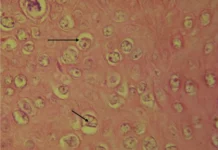A 75-year-old man was brought to the emergency department with complaints of cramping pain in the abdomen associated with vomiting for the past 12 hours. The patient had no significant past medical or surgical history
On physical examination, there was abdominal distention with tenderness. Palpation revealed no rebound tenderness or guarding.
In the emergency department, nasogastric decompression was performed. The aspirated contents contained bilious-appearing stomach contents.
A working diagnosis of midgut volvulus was made as the Computed tomography of the abdomen showed a “whirl sign” (Panel A).
Exploratory laparotomy was performed. Intraoperatively jejunal diverticula were identified to be the cause of mesenteric volvulus (Panel B). The diverticula were 30 cm to 130 cm in size and were located below the ligament of Treitz.
Jejunal diverticula were resected along with the 400 cm of residual intestine on the left side.
Postoperatively, the patient was given enteral nutrition via a jejunostomy tube from the third day of surgery, and from the fifth day, the patient was started on oral feeds. The patient had recovered well, so he was discharged by the eighth postoperative day.
On the 21-day followup after the discharge, the jejunostomy tube was removed.
The literal meaning of the Latin word ‘volvulus’ is to roll. When the intestine twists around its mesentery, the bowel lumen, and the vessels compress, which together lead to ischemia of the affected portion of the bowel. Prolonged, unattended can lead to infarction of the affected bowel section.
CT scan remains the imaging modality of choice for diagnosing volvulus along with clinical correlation. Midgut volvulus is the most common site for the intestinal volvulus, which, if not corrected in time, can lead to loss of the bowel section. Thus volvulus requires immediate intervention
Reference
Wan-Yu Hung, M.a.-Y. (2020, June 25). Mesenteric Volvulus from Jejunal Diverticulosis. Retrieved from The New England Journal of Medicine: https://www.nejm.org/doi/full/10.1056/NEJMicm1911732




